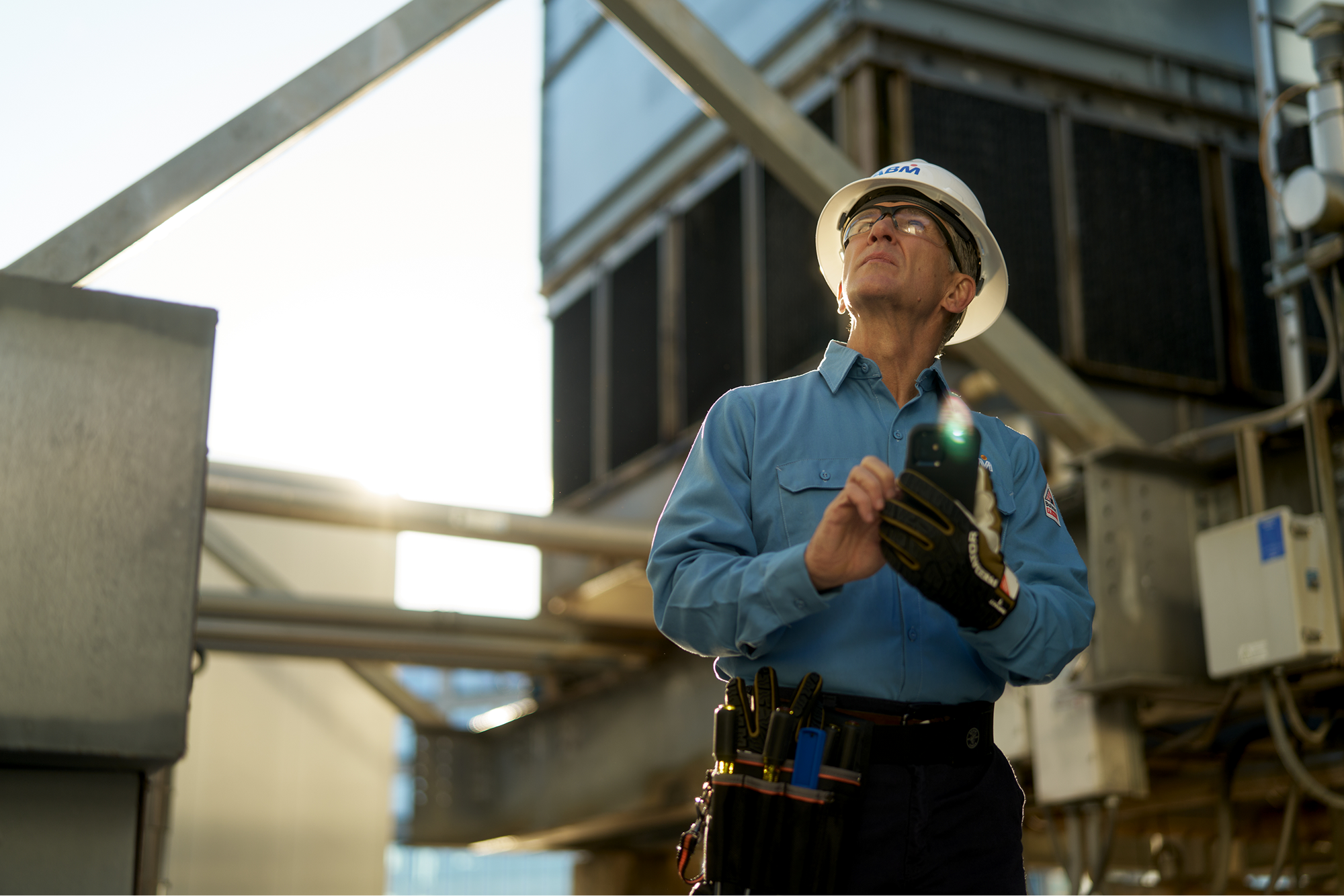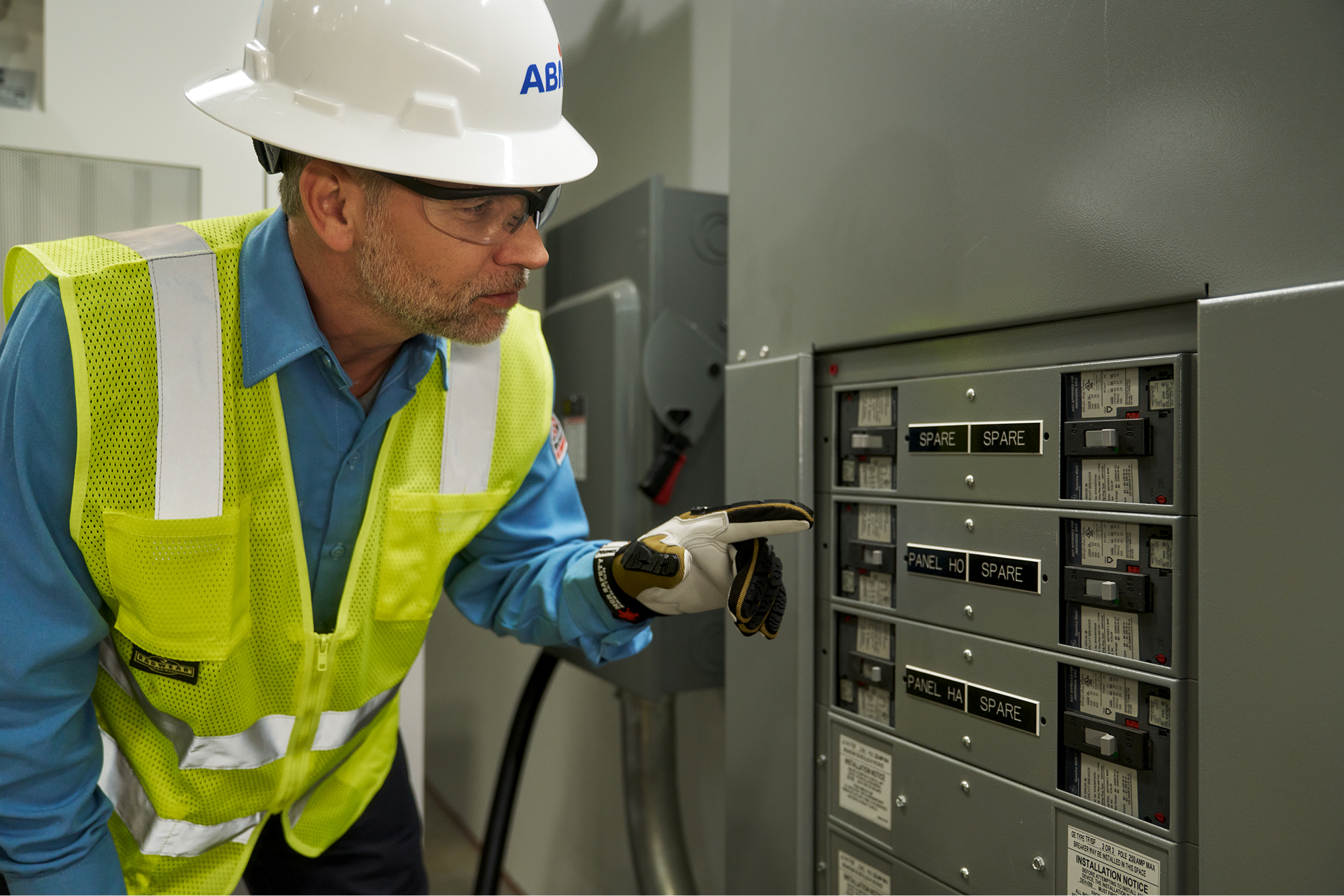An Infrastructure Update Can Go Far for Your Facility’s Future
Staying ahead of the curve

 The infrastructure of America is aging. From potholes on highways to deteriorating bridges, the nation’s physical assets are showing their age more than ever. Buildings require a serious infrastructure update as well. Whether it’s a distribution center, a commercial property, or a college or university campus, a facility revamp and modern approach can make a massive impact.
The infrastructure of America is aging. From potholes on highways to deteriorating bridges, the nation’s physical assets are showing their age more than ever. Buildings require a serious infrastructure update as well. Whether it’s a distribution center, a commercial property, or a college or university campus, a facility revamp and modern approach can make a massive impact.
As of 2021, the average age of a commercial building in the U.S. is 54 years old.
It’s not just the physical appearance of buildings that needs attention, but also the functionality of internal systems. The way buildings operate has a direct impact on the health and productivity of people who use them. Outdated systems can be costly to maintain, lower property values, and even present health and safety risks to occupants.
Upgrading the infrastructure of a facility not only brings it up to modern standards, but also ensures long-term cost savings, increased energy efficiency, and better comfort for everyone.
This whitepaper explores how strategic upgrades to HVAC systems, plumbing, and electrical infrastructure can revitalize a facility, making it more functional, efficient, and future-ready. It also explains how these strategic upgrades can all be executed with a single facility partner—ABM.
Creating comfort with upgraded HVAC systems
An HVAC system plays a critical role in indoor comfort. Whether it’s summer or winter, HVAC systems help maintain an indoor environment that protects employees and occupants from the extreme temperatures outside. However, when HVAC systems are outdated or underperforming, they can cause significant discomfort, leading to dissatisfaction among workers and tenants. An outdated or poorly maintained system can even lead to lower productivity and health problems.

46% of workers claim their office is either too hot or too cold.
In addition to temperature control, modern HVAC systems are essential for maintaining good indoor air quality (IAQ). Poorly maintained systems are a breeding ground for mold, allergens, and viruses, which can lead to serious health issues. By upgrading HVAC systems and ensuring they are well-maintained, facility managers can significantly improve air quality, thus promoting better health and productivity.
More efficiencies mean more savings
Older HVAC systems can be prone to breakdowns and require frequent repairs. This reactive maintenance often seems less expensive than a full system replacement, but over time, costs can add up.
On average, HVAC systems last 15-20 years before their performance significantly deteriorates.
By investing in a modern, energy-efficient HVAC system, facility managers can reduce maintenance costs, lower energy consumption, and improve occupant comfort. In addition, ABM performs proactive maintenance services for facilities and power systems. This strategy aims to identify and fix equipment long before issues arise.
Advanced HVAC systems also come equipped with automated controls that help optimize temperature settings and air quality, ensuring that energy is used efficiently. These systems not only save money by reducing utility bills but can also contribute to a building’s sustainability goals. Furthermore, high-efficiency chillers and cooling systems can reduce the load on large mission-critical cooling units, leading to even greater savings.
Plumbing that’s safe, efficient & built to last
Another critical component of facility infrastructure is plumbing. It’s easy to forget about the pipes behind the walls and under the floors until something goes wrong. A burst pipe or a leak in the system can cause significant damage to the building, disrupt operations, and lead to costly repairs. As plumbing systems age, they become more susceptible to corrosion, leaks, and blockages. Regular maintenance and timely upgrades can prevent these issues, ensuring that your building’s plumbing system is both functional and safe.
Modern plumbing systems are also designed to conserve water. By upgrading to water-efficient fixtures and appliances, facilities can reduce water consumption and lower utility costs. In addition, many of these systems are compatible with green building certifications such as LEED® (Leadership in Energy and Environmental Design).
LEED certification is a valuable asset for any building, as it signals to occupants and the public that the facility is committed to sustainability and efficiency. ABM has LEED experts and certified technicians who are trained and ready to help facilities achieve certification through a series of rigorous tests and inspections.
Conserving water & costs
Water conservation is an essential consideration in today’s facilities management. Upgrading plumbing systems to use water more efficiently not only lowers operational costs but also supports sustainability goals. Water-saving technologies, such as low-flow faucets, efficient HVAC cooling towers, and smart water meters, can help monitor and reduce water usage.
A modern plumbing system can also reduce the risk of water damage by incorporating advanced leak detection technology. These systems can detect potential issues before they escalate into major problems, saving facility managers time, money, and stress. This is yet another example of how proactive maintenance comes into play.
For buildings aiming for LEED certification, an efficient plumbing system can also contribute to credits in water use reduction, helping the facility meet rigorous environmental standards and appealing to tenants and clients who value sustainability.

Putting safety first with efficient electricity
Electrical systems are the lifeblood of daily operations. From lighting to critical equipment, electricity powers nearly everything within the building. However, electrical systems that have not been properly maintained or upgraded pose significant risks. Outdated wiring, overloaded circuits, and worn-out electrical components can lead to power outages, safety hazards, and even fires.
Many buildings have deferred necessary electrical maintenance for years, which increases the risk of failure and safety violations. The solution is to modernize the electrical infrastructure with high-efficiency systems that not only improve safety but also offer long-term cost savings. For example, by upgrading to energy-efficient lighting, a building can reduce energy consumption and lower electricity bills while improving the quality of light for its occupants.
No more downtime
With modern electrical systems in place, facility managers can enjoy fewer unexpected failures and less downtime. Instead of reacting to emergencies, a proactive approach to electrical maintenance, including routine inspections and energy assessments, can prevent costly breakdowns. This can improve both productivity and tenant satisfaction, as occupants will experience fewer interruptions to their daily routines.
Regular preventative maintenance also ensures that all electrical components remain compliant with safety codes and regulations. This is essential for avoiding penalties and liability issues that may arise from non-compliance. Routine electrical safety training for building staff can also help prevent workplace accidents and further ensure that the facility remains a safe environment for all.
Compliance is key
Complying with electrical safety standards is not only essential for the well-being of your occupants but also a legal requirement. For facilities with outdated electrical infrastructure, it’s crucial to bring systems into compliance with the latest codes and regulations. An up-to-date electrical system reduces the risk of electrical hazards, such as fires or electrocution, and ensures that the facility meets all necessary regulatory standards.
By partnering with a knowledgeable facility services provider, managers can ensure that the building’s electrical systems remain safe, efficient, and up to code. This approach not only improves safety but also provides peace of mind to both management and occupants.
Improved infrastructure leads to improved experiences
The impact of an infrastructure overhaul goes beyond just improving the physical comfort of a building. It can significantly enhance the building’s brand identity. A modern, well-maintained facility projects a positive image to tenants, visitors, and the public.
In contrast, an outdated, poorly maintained building can give the impression that the organization inside is not forward-thinking or committed to providing a quality experience.
Revitalize your facility with ABM
For facility managers looking to revitalize their building’s future, partnering with a trusted provider like ABM makes all the difference. As a leader in integrated facility services, ABM understands the importance of modernizing your building’s infrastructure. By working with professionals who are well-versed in the latest trends and technologies, you can ensure that your building is not only up-to-date but also future-ready, helping it thrive for years to come.
ABM excels in improving critical systems like HVAC, plumbing, and electrical, making sure your facility exceeds current standards while preparing it for future needs. Their commitment to enhancing occupant comfort and contributing to sustainability goals ensures that your building remains safe, efficient, and environmentally responsible.
With decades of expertise from ABM, facility managers can confidently implement infrastructure upgrades that lower operational costs, improve energy efficiency, and enhance the overall tenant experience. Whether it’s through smarter energy management or cutting-edge building technologies, the future-forward approach from ABM ensures that your facility is always ahead of the curve.
In the long run, these upgrades not only improve property value but also help position your building as a leader in the sustainable, efficient spaces of tomorrow.

References
Research Commentary, SMR Research Corporation
Workers Are Literally Fighting Over Temperature in the Office, Finds New CareerBuilder Survey, CareerBuilder.com







